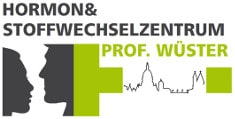Endocrinologist Mainz/Wiesbaden: Examination of the thyroid
In this way, thyroid diseases such as Hashimoto’s are quickly recognized
If symptoms suggest a thyroid disorder, the neck area below the patient’s larynx is palpated first. Doctors such as endocrinologist Prof Dr Christian Wüster from Mainz can thus quickly detect a change in the thyroid gland. An enlargement or lump can often be palpated.
The autoimmune disease Hashimoto’s is an inflammation of the thyroid gland
In a second step, ultrasound examinations and blood tests are added to the diagnosis. Hashimoto’s autoimmune disease is an inflammation of the thyroid gland. This results in hypothyroidism. Ultrasound and blood tests can quickly provide clarity. An inflamed thyroid gland is heavily perfused and has an inhomogeneous appearance. Enlargements can also be detected quickly thanks to ultrasound.
Patients with Hashimoto’s thyroiditis
Patients with Hashimoto’s thyroiditis can usually be cured. Today, there are very effective treatment methods that help people to live well with the disease. Functional disorders such as hyperthyroidism or hypothyroidism must be treated accordingly. Treatment with selenium is propagated, but is of secondary importance. In individual cases, psychotherapy may be necessary to eliminate negative stress.
Often these are conflict situations such as conflicts in relationships, separations, deaths of a close relative, but also bullying at work. It is important that such situations are the trigger for the disease and that a complete cure is therefore possible. In this way, the ultrasound changes, the antibody titres and also the functional disorders can then completely disappear.
Examination of the thyroid is important for couples who have an unfulfilled desire to have children
Examination of the thyroid is particularly important for couples who have an unfulfilled desire to have children, because patients with autoimmune thyroid diseases have lower fertility. Collaboration with the gynecologist is necessary here. Patients who have survived cancer and have received whole-body radiation or aggressive chemotherapy can develop an underactive thyroid later in life. Hemato-oncologists always keep a watchful eye on such complications in follow-up care. Cardiac arrhythmias are often caused by a dysfunction of the thyroid, for example atrial fibrillation is often a symptom in patients with pre-existing cardiac damage. This is where collaboration with cardiologists is required.
Note: This article contains only general information and should not be used for self-diagnosis or treatment. The article can in no way replace a visit to the doctor.
Image of the Endocrinologist Mainz/Wiesbaden page: © 7activestudio/Fotolia

